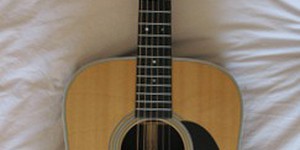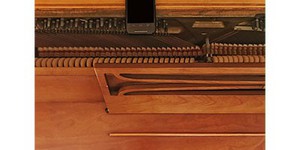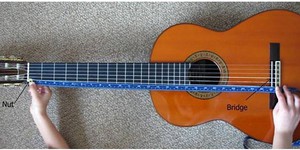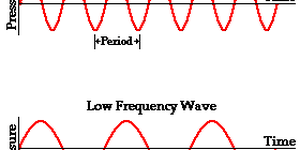Others Like “Pick This Project!” (top 20 results)
|
This is a great project for a musician who is interested in the physics of stringed instruments. If you've ever played an acoustic guitar, you may have noticed that picking a single string can make one or more of the other (unpicked) strings vibrate. When this happens, it's called sympathetic vibration. What intervals lead to the strongest sympathetic vibrations? Find out for yourself with this project.
Read more
In this project, you'll investigate the physics of standing waves on guitar strings. You'll learn about the different modes (i.e., patterns) of vibration that can be produced on a string, and you'll figure out how to produce the various modes by lightly touching the string at just the right place while you pick the string. This technique is called playing harmonics on the string. By the way, we chose a guitar for this project, but you can do the experiments using any stringed instrument, with…
Read more
This is a rockin' project for guitarists with an interest in the physics behind the music. Have you ever wondered why the pitch of the note changes when you fret the string? You can find out for yourself with this project on the fundamental physics of stringed instruments.
Read more
Do you love to make music, but do not have access to all the instruments you would love to play? Check out this fun science fair project about the physics of musical sound production. You will make musical instruments with drinking straws, one for each note on a one-octave major scale. Can you figure out the right lengths for a series of straw "oboes" in order to play a musical scale?
Read more
The renowned pianist Vladimir Horowitz once said, "The most important thing is to transform the piano from a percussive instrument into a singing instrument." In this project, you will learn how you can make piano strings sing using sympathetic vibrations. Find out which notes make another one sing the longest by measuring their sound intensities using a smartphone equipped with a sensor app.
Read more
Did you know that your guitar has a secret? Yes, that's right—hidden along each string are special places where you can play harmonics and make your guitar sound like a bell! In this music science fair project, you'll find out where the main harmonics are located on a guitar, and then see how those locations are related to the length of the strings. So get out your guitar—it's time to ring in a science fair project!
Read more
Want to start a garage band, but Mom or Dad won't let you because it will make too much noise? This is a good project for someone who is interested in acoustics and likes to build things. Who knows, it might help you figure out how to make everyone happy.
Read more
Walk into any music store and you'll find a dizzying array of string choices for your classical guitar, including rectified nylon, clear nylon, carbon fluoride, bronze wound, phosphor bronze wound, silver-plated copper wire, Polytetra-flouro-ethylene (PTFE), each in a range of tensions from low to high. There is no single best brand or best material. All have their advantages and disadvantages. A set of strings that sounds "sparkling" on one guitar might sound dull on another, primarily because…
Read more
In this project you'll learn how to make a piezoelectric pickup for acoustic guitar using inexpensive components. You can then connect your acoustic guitar to an amplifier, and record your own music. If you are interested in electronics and like playing acoustic guitar, this could be the perfect project for you.
Read more
Have you ever blown across a bottle's top and made a pleasant, resonant sound? If so, have you wondered how that note is made exactly? A bottle is actually what is called an air cavity, also known as a Helmholtz resonator. Ocarinas are examples of musical instruments of this type. In this science project, you will use bottles to investigate how the volume of air in the cavity affects the pitch of the note that it makes. All you need are some bottles, water, a ruler, and a chromatic tuner.
Read more
|
Explore Our Science Videos
Flying Helicopters on Mars - Paper Models
Will 200 Sticky Notes Hold My Weight?
Science Buddies: Pilobolus Spore Sac Launch














